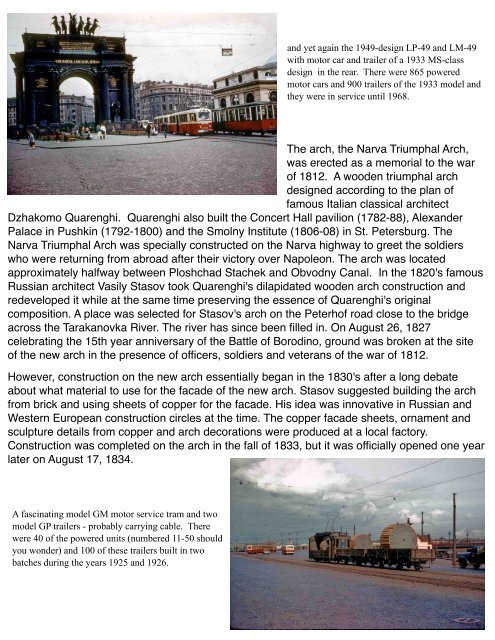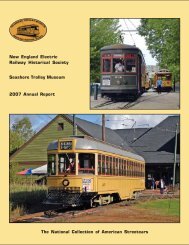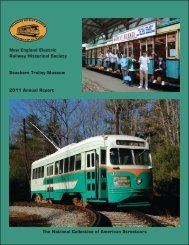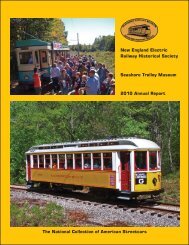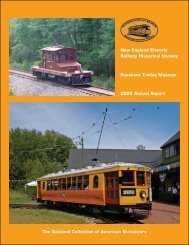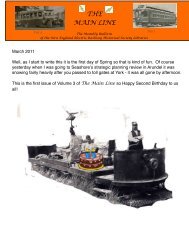June 2013 Main Line vol5 No4 - Seashore Trolley Museum
June 2013 Main Line vol5 No4 - Seashore Trolley Museum
June 2013 Main Line vol5 No4 - Seashore Trolley Museum
Create successful ePaper yourself
Turn your PDF publications into a flip-book with our unique Google optimized e-Paper software.
and yet again the 1949-design LP-49 and LM-49<br />
with motor car and trailer of a 1933 MS-class<br />
design in the rear. There were 865 powered<br />
motor cars and 900 trailers of the 1933 model and<br />
they were in service until 1968.<br />
The arch, the Narva Triumphal Arch,<br />
was erected as a memorial to the war<br />
of 1812. A wooden triumphal arch<br />
designed according to the plan of<br />
famous Italian classical architect<br />
Dzhakomo Quarenghi. Quarenghi also built the Concert Hall pavilion (1782-88), Alexander<br />
Palace in Pushkin (1792-1800) and the Smolny Institute (1806-08) in St. Petersburg. The<br />
Narva Triumphal Arch was specially constructed on the Narva highway to greet the soldiers<br />
who were returning from abroad after their victory over Napoleon. The arch was located<br />
approximately halfway between Ploshchad Stachek and Obvodny Canal. In the 1820's famous<br />
Russian architect Vasily Stasov took Quarenghi's dilapidated wooden arch construction and<br />
redeveloped it while at the same time preserving the essence of Quarenghi's original<br />
composition. A place was selected for Stasov's arch on the Peterhof road close to the bridge<br />
across the Tarakanovka River. The river has since been filled in. On August 26, 1827<br />
celebrating the 15th year anniversary of the Battle of Borodino, ground was broken at the site<br />
of the new arch in the presence of officers, soldiers and veterans of the war of 1812.<br />
However, construction on the new arch essentially began in the 1830's after a long debate<br />
about what material to use for the facade of the new arch. Stasov suggested building the arch<br />
from brick and using sheets of copper for the facade. His idea was innovative in Russian and<br />
Western European construction circles at the time. The copper facade sheets, ornament and<br />
sculpture details from copper and arch decorations were produced at a local factory.<br />
Construction was completed on the arch in the fall of 1833, but it was officially opened one year<br />
later on August 17, 1834.<br />
A fascinating model GM motor service tram and two<br />
model GP trailers - probably carrying cable. There<br />
were 40 of the powered units (numbered 11-50 should<br />
you wonder) and 100 of these trailers built in two<br />
batches during the years 1925 and 1926.


